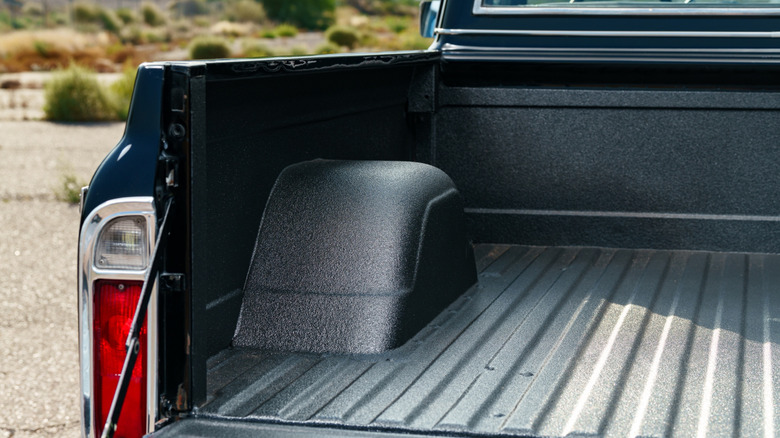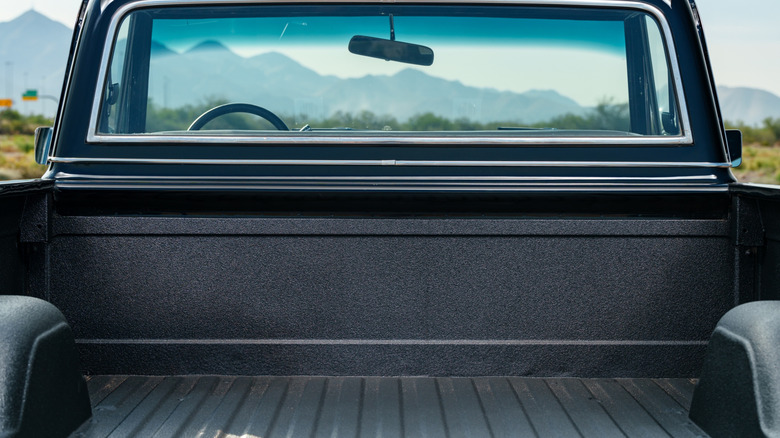Why Do Truck Beds Have Ridges? Here's What They're For
Pickup trucks are versatile, spacious, and hugely popular. From power tools and lumber to furniture and tailgate party gear, they're built to haul just about anything that'll fit in the bed space. But even longtime truck owners might find themselves puzzled by one common design feature: the ridges and grooves stamped into the floor, sides, and tailgate of the truck bed. At first glance, these grooves might look like nothing more than an aesthetic choice. As it turns out, they're there to make the bed more practical, more functional, and more durable.
Let's start with the grooves in the bed floor. You might assume these channels are there to help with water drainage during rainy weather. While they do guide water out of the bed, that's more of a bonus than their core purpose: the ridges stamped into the floor add strength to the structure of the bed. Without those ridges, the truck bed would just be a flat piece of metal, much more prone to bending or sagging under the weight of heavy cargo. By adding grooves, manufacturers are able to create rigidity and stiffness without needing to use a thicker or heavier metal.
What about the ridges on the sides and wheel wells?
The vertical ridges on the truck bed's walls and over the wheel wells also have more utility than you might expect. For one, they act as slots for dividers. Many trucks are designed so that a standard 2x4 board can be slid into these indentations, letting you create custom compartments in your truck bed. It's a simple yet smart solution for preventing smaller loads, such as paint cans, floor tiles, or toolboxes, from sliding around during transit. You can instantly create a more secure, organized space without needing extra straps or bungee cords. It's a great feature for DIYers, movers, or anyone who occasionally hauls smaller or fragile items.
Those ridges above the wheel wells serve an additional function, as well. Because the wheel wells eat into the floor space, laying flat items like plywood or sheetrock directly on the bed floor can be tricky. By placing a 2x4 horizontally across those indentations, you can create a raised platform across the top of the wheel wells. This lets wide sheets be laid flat while also leaving enough space beneath the platform for extra gear or storage.
Even the tailgate's ridges serve a purpose
The tailgate grooves aren't just for show, either. In some truck models, these ridges are designed to support longer items that extend out of the bed, such as boards or pipes. Other models use grooves in the tailgate to create a multifunctional work surface. For example, Ford's F-150 tailgate can double as a mobile workspace, complete with cup holders, clamp pockets, a tablet stand, and even a built-in ruler.
It just goes to show: Next time you load up your pickup, take a closer look at those ridges. They're not just random lines or some useless design choice — they're carefully designed features that make your truck smarter, stronger, and more adaptable to the way you work and live. Whether you're hauling construction materials, setting up a mobile workshop, or just trying to keep your groceries from sliding around, those grooves are definitely there for a reason.


